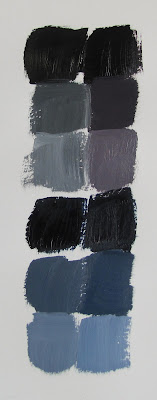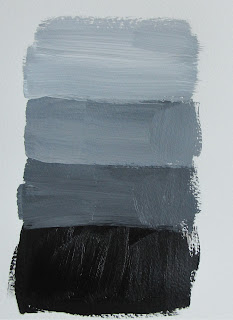CREATIVITY.
I guess I'm just not a creative person.
I hear this too much. I've been thinking a lot about
creativity lately and its power in our lives. And how to respond to that
question.
Creativity being the ability to make new connections and
combinations between ideas and things. And then to realize that new thought
into reality.
Being creative is complex. It's a combination of knowledge
and skill, freedom from limiting thought, and motivation from within.
Creativity takes effort.
SO WHY DO IT?
We need it.
Nothing in life can be stagnant without decay. A stagnant
pond becomes unhealthy to drink and breeds disease bearing insects. Our bodies
become weak and ill without use. Our minds become dull and forgetful.
If we aren't moving forward, we are moving backward. Though
I love to think about just relaxing, not doing anything, retiring from the
craziness that is life. I know that it is only possible for short periods of
time. After that the decay sets in.
We need growth, and creativity. It heals us. It keeps us
young.
The world needs it.
Without creativity, we can never find answers to the world's
problems: war, hunger, misery, depression, homelessness, intolerance, hatred,
etc, etc.
All the easy solutions have been used up. We have new challenges
to our planet, our societies. The easy way is to walk along the well worn
paths. Not standing out, not swimming against the current. There's a quote from
Henry Ford that sums it up: "If you always do what you've always done,
you'll always get what you always got".
Everyday
Creativity
Every day we have the opportunity for creative thought. My
daughter wakes up every day, stands in front of her closet, and creates a new
combination of clothes to wear. Sometimes they are, ummm, unusual! Sometimes
they are brilliant! But they are creative. She has done an inventory of what
she has to work with, where she needs to go, what she knows, and come up with a
new combination, a creative thought. And with that warm up, she goes about her
life with her mind already thinking along those lines. What if? Why not?
It is that process itself that we need. That surge of
excitement. Engagement.
Creating new, more efficient systems. Finding a better bike
route to work. Adapting a recipe. Resolving an argument. Hundreds of times a day
we have the chance to do what has always been done, or find a better, more
fulfilling, more elegant way.
Making creativity a state of mind, a habit, develops your
ability to be creative when the big things come along. And gives you a boost of
well being along the way.
Creativity and
Painting
So this is why I paint, and especially why I teach painting.
It is a path to developing and experiencing creativity. Which means it is a
path to improving the quality of your life, and the lives of those around you.
Creativity is not for just a few. If you "can't draw a
stick figure" that does not mean you aren't creative, or would not benefit
from learning to paint. We are all creative. For all kinds of reasons, some of
us have suppressed our creativity more than others. But we can change that, and
enrich our lives on all levels because of it. Once you develop your creativity
into a habit, it effects everything you do.
You are NEVER too old. Someone once told me she had given up
painting when she hit 60 because she didn't want to be "an old lady who
paints". Wow. It's better to just be an old lady?! Cause there's only one
alternative to that! Whether or not you become the next Picasso, or turn your
friends green with envy at your skill, is not the point. At all. The point is
you living fully. Letting go of the boundaries and the barriers. Feeling that
excitement and surge of growth.
Creativity takes effort.
You have to learn
your stuff. When I was learning to paint, taking college classes, there was
a real emphasis on "being creative". But I didn't have the skills to
realize my creative ideas. It was very discouraging. You must develop your
skills. Learn your theory. Composition, color, drawing and perspective.
Practice your technique. Create that "muscle memory" in your hands so
that you don't have to think about how or where to place your brush anymore.
This is not an overnight endeavor! It truly is a life long one. To do this you
need to paint, and paint a lot. And you need to read, study, be curious, visit
exhibitions.
You have to give
yourself permission to fail. It's not possible to be creative without
taking risks. You must be willing to fail, and to keep failing. If you aren't,
you will never try anything new for fear of ridicule from others, or from
yourself! In reality it's often only you that cares whether or not you
tried and failed, most people just aren't paying attention. In reality, the
failure comes in not trying.
Free yourself from
limiting thought. If you compare and limit your ideas to someone else's
opinions; what your family, your social group, your peers think, you will never
have an original thought. You must be willing to entertain all ideas,
connections, concepts and not dismiss them because "it just isn't
done".
You have to try. Creative
thought is a choice. An activity. You have to be motivated to not just continue
in the established pattern, but to experiment, visualize, focus. Put in the
effort to activate your thought processes, and not just follow the beaten path.
Not because someone else encourages you to, or you get positive feedback, but
because you want to.
Is Painting
Really Creative?!
Using our definition of painting: a putting together new
connections, new ideas and realizing them. Is it really creative to sit in a
class with me and paint the same painting as everyone else using the same
materials?
The simple answer? No.
But you have to learn your stuff. You have to make the
effort to learn the rules, so you can break them. Learn your technique so you
can use it without thinking when you are excited by a new creative concept.
In my classes I try to take this complex, daunting activity
of painting, and break it down, step by step. In my experience our minds tend
to shut down and we lose interest when things seem so complex we don't even
know where to start. In other words: if it's too hard, we give up. If we don't
have immediate success, we give up. If someone else makes fun, or ignores our
efforts, we give up. The only way to tackle this is step by step, in an
environment that supports failure as the success that it is.
In the words of Vincent Van Gogh "If you hear a voice within you say ‘you cannot paint,’ then by all means paint and that voice will be silenced."
What I don't want is to create a formula for creating a painting that you just keep re-creating. Did you ever think about that word? It becomes (re)creation instead of creation. It's fun, it passes the time. That's not a bad thing! I do that kind of painting quite a bit! But what I'm trying to give you is a path to creativity. That healing, age defying, life changing, world changing experience.
So I don't make it easy. I keep giving you concepts and
ideas to learn. When you ask me how to neutralize this blue I'm not going to
tell you. I'm going to ask you what the compliment of blue is. When you have
your value almost right I'm going to tell you that. It's almost right, try
again. I'm not just going for good enough. NOT because I want you to paint a
perfect picture. I want you to eng
age your mind. Activate your curiosity. It's this process that is the point. All these little discoveries about art, about your own abilities, that are the point.
age your mind. Activate your curiosity. It's this process that is the point. All these little discoveries about art, about your own abilities, that are the point.
If you think, "that's too hard for me to do". And
then you let go of your fear, you think beyond your pre-set ideas. And then you
try, and fail. And then you try again and make some connections - since that
color combination didn't work, what if I try this one? And it works! That is
the point. That feeling of opening up to the possibilities. Expanding your
world. That is the point.
My goal is to help you develop the tools, create the
environment, ask the questions. So you can expand your world through
creativity. And by doing that, I expand mine!
There are lots
of ways
Paths if you will. Paths that lead you to your own unbeaten
path. Music, Painting, Dance, Writing, Sculpture - those are some of the more
traditional ones. But you can practice your creativity in everything you do. In
trying to be yourself, do it better, open your heart and mind to new
possibilities. Work, home, relationships, neighborhoods, cities, countries, the
world. The ultimate creative act is the creation of your own story. Your own
life. Create it, develop it, live it, share it. You have the ultimate power of
the universe within you.
So now, how do you neutralize that blue?

















